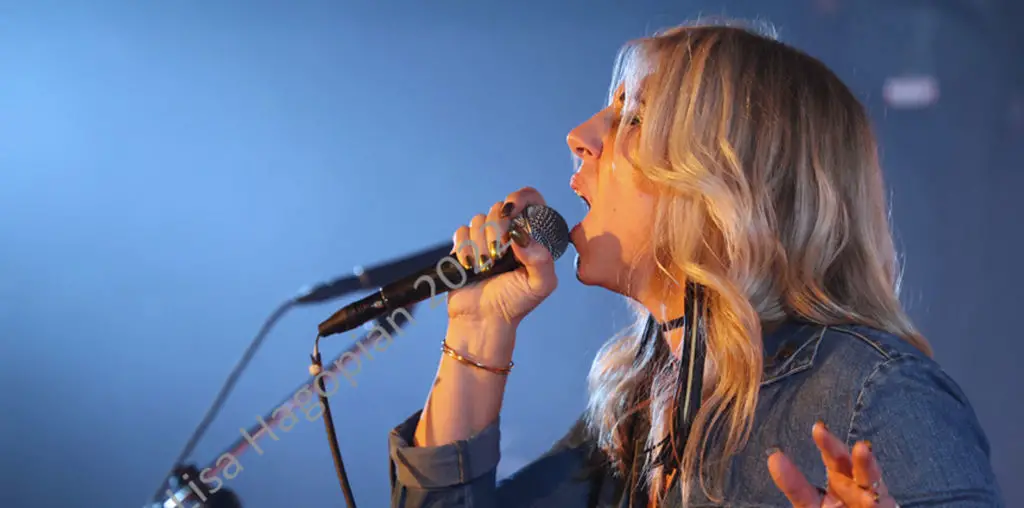
(In honor of today’s release of the two-disc Platinum Edition of “The Little Mermaid,” I go back to September 10th, my first visit to the El Capitan Theatre)
Many buildings in Los Angeles scream, “Look! Architecture!” But the El Capitan Theatre on Hollywood Boulevard in Los Angeles reveals its treasures bit by bit, making the “Disneyland” Walk of Fame star at the entrance of the adjacent Disney’s Soda Fountain and Studio Store a misnomer.
Indeed, with both properties owned by the Walt Disney Company, the Soda Fountain and Studio Store acts as any souvenir shop does at the end of an attraction: It’s a booming profit center that’s hard to navigate, with a crush of people freshly arrived from a screening. But that’s not where the star belongs.
Hollywood, in conjunction with Disney, should have built the largest Walk of Fame star possible for the wide set of doors that invite guests into the El Capitan Theatre and given that the “Disneyland” label. In some respects, the theater, as you take in everything around you outside and as you walk in, is an extension of the Disney experience, in a central location on Hollywood Boulevard, facing an almost surreal sidewalk across the street that features a few men and women in misshapen character costumes, Jesus preachers standing on sturdy boxes, making their voices stronger by microphone and portable speaker, and those just wanting to attract the tourists with furious street dancing that, almost impossible as it may be, does attract sizable crowds.
The occasion of this virginal visit was a screening of “The Little Mermaid,” my sister’s favorite film and the first time she’s seen it on a screen bigger than our TVs at home. And what better way to see it than at a theater expressly owned by the company that made the film? While “The Little Mermaid” features wisps of a story connected by big, spectacular songs, I was there for the latter, armed with my undying love for Disney villains, and the chance to see it digitally projected. I knew that the theater harbored a lot of history, from early days in the late 1920s as a venue for plays and later, for the world premiere of “Citizen Kane.” That was also reason enough for me to be there.
But what came through in walking up to this palace of almost royal design (the architect and craftsmen in charge of construction, as well as the people in charge of restoring the theater decades later, obviously had the best intentions and never forgot them), is that not only is this a place of history, but also a locale for new memories to be created that feel like dreams at the same time.
Your best chance of getting into the theater without any problem (especially if you’ve bought a VIP ticket which includes bottled soda and a plastic keepsake popcorn bucket) is about half an hour beforehand if you’ve been dropped off, or add 10 minutes to that if you’ve parked somewhere nearby.
Any movie being featured at El Capitan will bring in a different-looking audience every time and “The Little Mermaid” crowd, with all manners of little girls with their parents, was no different. Arriving at least half an hour beforehand is also fiercely recommended because of the experience of being inside the theater with the time before the movie passing by slowly, filtered through the carpets, the high, glorious ceilings made of expensive gold patterns, a projection system quietly waiting in the dark booth, with a computer monitor displaying all that’s ready, and yellow slipcovers on the floor-level seats indicating “Reserved Seating.”
Organization as exhibited at El Capitan is far beyond the masses that gather at any ordinary movie theater, just arriving to see whatever movie is playing. An usher is stationed at the entrance to the lobby and at the entrances to each section of the lower level of the theater, ready to direct you to the appropriate usher, who walks you to your seat and shines a flashlight on where that seat is in that specific row.
The experience of VIP seating is ironically private even with all who are around you. The VIP Balcony section on the upper deck as well as an inordinate number of general admission seats never reveal who’s sitting up there, unless you were to stand in front of the Wurlitzer that’s played before each screening, emitting a slew of well-known Disney movie songs, including (at least at this 12:30 Sunday screening) “Cruella De Vil,” “Circle of Life,” “When Somebody Loved Me (Jessie’s Song)” from “Toy Story 2,” and the traditional “It’s a Small World,” with “Under the Sea” being performed as showtime got closer.
Silence is a valuable commodity in a movie theater, where you hope that no cell phone goes off, lest that offender wants his or her cell phone ringing in their stomach or their anus. Nothing like that disturbed this screening and most likely not because of the hostess who appeared before the start, announcing news of upcoming screenings and asking guests to take their cell phone calls in the lobby during the movie. There were parents here who were genuinely interested in seeing their kids’ reaction to this event. After all, $20 per VIP ticket should always be taken seriously.
And surely, the volume during the movie drowned out any chance of hearing a cell phone go off, but who would want to with this rare opportunity, only in Hollywood?
What became even more remarkable than the theater itself was the reaction by all the little kids around, eager to see one of their favorite Disney characters on the screen. Normally, you’d want any little kids at a movie to shut up and just watch, leaving the volley of questions for after they’ve left the theater. But as the camera panned across Ariel’s cavern of human-made treasures and cut from shot to shot before settling on her looking at her new finds, a little girl behind me, to my left, asked her mother, “Mommy, is that Ursula’s stuff?” Well, it may as well have been, with what Ursula’s lair looks like in certain scenes.
I didn’t mind listening to those early questions, though I was tempted to say something later on in the movie when another thankfully forgotten question arose, but stopped myself when I was reminded that in toddlerhood, inane questions were expected from child to parent. I’m sure I had a few inane questions desperate to burst out of my mind when I was that young.
However, I marvel at the ingenuity of that little girl’s mother, avoiding her child’s direct question as to what Ariel had on when she came out of the ocean the first time, walking on her new pair of legs. The woman probably knew what her daughter meant, but also knew that at her kid’s age, it wasn’t the time to be frank about the attempts of directors John Musker and Ron Clements and the animators to frame Ariel just so, though I admit that there were more noticeable titters at Ursula’s massive bosom moving about as she sang “Poor Unfortunate Soul.”
Through everything else that went on during the screening—including an appearance by an actress playing Ariel for a brief moment on stage beforehand, and someone in a Sebastian costume dancing across the stage and imploring audience members to clap along during the reprise of “Under the Sea” at the start of the closing credits—I knew then exactly why I liked the El Capitan Theater so much.
I was spoiled in Florida with the few theaters I liked to visit. Most of the time, the movies I saw, such as “American Beauty,” “The Straight Story,” and “Run Lola Run” made my moviegoing what it was. The theater I was at—be it the Muvico Paradise 24 in Davie or the Sunrise Cinemas’ Sunrise 11 in Sunrise or the Gateway Cinema 4 in Fort Lauderdale—formed itself around the movie. A screening of “American Beauty” at Muvico was a collective experience for the entire audience, hushed by the cinematic mastery they were watching, thinking whatever thoughts they had. “American Beauty” at the AMC Pleasure Island 24 at Downtown Disney in Orlando in 2000 was shown in what felt like an intimate screening room. The film then assumed full prominence, causing the surrounding space to seemingly disappear, in favor of getting deeper into Lester’s dwindling months on the planet.
It shows that when you’re at a movie that people actually want to be at, that they’ve willingly invested their time in, there’s a shared buzz that makes you feel like you’re in good company. Among the little kids, the parents, and everyone else at that theater seeing “The Little Mermaid,” that same feeling was there. In little over an hour and a half, it didn’t matter how much anyone had paid to get in, it didn’t matter what was going on in our lives, it didn’t matter what we were each going to do later. We were all there to see a film that has crossed many generational lines for years and continues to do so. And through the design of the intimate lobby, the impressive space the theater takes up, and the attitudes of those running the operation, it’s easy to see that that sort of excitement still won’t happen in the average theater, despite the efforts of those seeking more profit trying to find ways to make moviegoing more attractive, prices be damned. It can only happen in places like these. While tourists rush about outside, trying to find a good upcoming bus tour or just looking for their favorite actor’s hand and footprints outside Graumann’s Chinese Theatre (the pushy Korean tour director leading his adult charges to Eddie Murphy’s cement rectangle was a trip to watch), we are here. We are at the movies.

